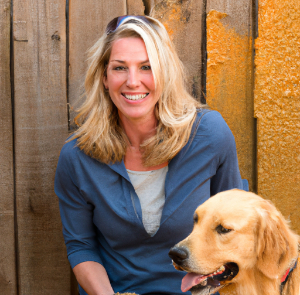
All types of companies offer pet insurance. There are mega-insurers like Nationwide and interest groups like the ASPCA, each of which offer a wide range of policies. And naturally there are stand-alone insurers which specialize in the business of pet insurance.
However, three companies – Healthy Paws, Petplan and Pets Best – stand out for their combination of affordable premiums, customizable plans and robust benefits. How do they compare against each other? We decided to find out by taking a deeper look at the providers and their programs, to see if there’s a “best” choice. Here’s what we found.
 The background of a pet insurer really does make a difference. One big reason: there are no “pre-existing conditions” guarantees for pet insurance, so once a pet develops a disease or illness it’s no longer realistic to switch policies. If you did, you’d no longer be able to insure your pet for a pre-existing problem. In order to keep complete coverage in effect you’ll have to maintain the same policy, with the same provider, for the life of your dog or cat.
The background of a pet insurer really does make a difference. One big reason: there are no “pre-existing conditions” guarantees for pet insurance, so once a pet develops a disease or illness it’s no longer realistic to switch policies. If you did, you’d no longer be able to insure your pet for a pre-existing problem. In order to keep complete coverage in effect you’ll have to maintain the same policy, with the same provider, for the life of your dog or cat.
That’s why the first thing we looked at was the background and stability of each of the three pet insurance providers on our list; before entering into a long-term relationship with an insurer, it’s crucial to know exactly who your “partner” will be.
Healthy Paws
Healthy Paws has been around since 2009. It was created by two men who met at their city’s no-kill animal shelter, an insurance executive and the shelter’s director. Their shared passion for shelter animals and pet health led them to start Healthy Paws Pet Insurance and Foundation. The company has broken ground in the areas of ease-of-claims and customer service and is constantly rated #1 by customers surveyed by independent reviewers; the foundation has issued grants to hundreds of shelters and rescue organizations.
While Healthy Paws may be less than ten years old, it is on firm financial footing. It has partnered with the $30 billion global insurance broker Aon Corporation, and its policies are underwritten by the enormous insurance company The Chubb Group.
Petplan
Petplan is only a few years older than Healthy Paws, with a compelling back story. The company was founded by a couple (both Philadelphia-area MBAs) who had to go into debt to pay enormous vet bills for their sick cat. Petplan is the sister company of the world’s largest pet insurer, Petplan UK, and provides insurance coverage for organizations like the U.S. Humane Society.
All of the company’s policies are underwritten by A+ rated insurance companies, AGCS Marine Insurance (a member of the Allianz Group, the world’s third-largest financial services company) and the multi-billion dollar XL Specialty Insurance.
Pets Best
The co-founder of Pets Best is a veterinarian who actually created the first pet insurance company in North America in the 1980s, after experiencing the trauma of a family that had its dog euthanized because it couldn’t afford medical bills. His company was the one which wrote the first-ever U.S. pet insurance policy, for TV star Lassie. The eventual outgrowth of his work was the creation of Pets Best in 2005. The company has also become known as the first to offer a full electronic claims filing system, complete with direct deposit of reimbursements.
Policies are underwritten by American Pet Insurance Companies, a large specialty company specializing in pet health insurance coverage for a number of large providers, or by the Independence American Insurance Company, a member of the NYSE-traded IHC Group.
In short, all three pet insurance providers are reputable, well-backed and well-funded, and run by professionals deeply and personally invested in pet wellness and care.
Accident-and-illness pet insurance is, by far, the most common type of coverage chosen by pet owners, because it covers nearly all of the enormous veterinary expenses the owners may face over the lives of their pets. Some providers also offer accident-only policies, or separate coverage that pays only for wellness visits, shots and treatments, and we’ll look briefly at the less-popular options in a bit.
However, we’ll primarily be focusing on the accident-and-illness policy offerings from each of the three companies we’re considering. Here’s an overview of their so-called “major medical” plans.
In this section we’ll be looking at several key variables:
Healthy Paws
One of the best ways to get the pet insurance plan that meets your needs is to choose a provider which offers many policy options. Healthy Paws has lots of them.
Petplan
Petplan provides even more options for pet owners than Healthy Paws. However, some of the company’s basic plans come with less-desirable features, requiring you to pay extra for some benefits that are standard with all Healthy Paws coverage.
For now, let’s break down the petplan review based on the following criteria.
Pets Best
Our third option also provides a large number of customizable choices to create a policy that meets the needs of almost dog or pet owner, with more flexibility than the competitors in some areas and less flexibility in others.
All three insurers will cover both dogs and cats, and all provide coverage for purebred pets. However, you’ll have to pay more for dogs than cats, more for larger dogs, and often much more for purebreds.
All three companies provide accident-and-illness coverage for the major expenses that owners of sick or injured pets can expect to face over time: emergency treatment, diagnostics and advanced tests, hospitalization, surgery and aftercare. They will all also cover chronic, hereditary and congenital conditions – one of the big reasons they’ve made the cut for our top three pet insurance reviews.
As always, though, the devil is in the details; each plan has its peculiarities or exclusions, and it’s important to distinguish between them before making a choice. We’ll be running those down now, along with information on the companies that also offer accident-only or wellness policies, or other types of unusual insurance options.
One explanation first. We’ll be making general observations about each company’s pricing policies based on a wide survey of policies. For the sake of examples, though, we’ll also show pricing for three theoretical pets: a three-year old medium-sized mixed-breed male dog, a similar English bulldog (the most expensive breed to insure), and a three-year old domestic short hair male cat. All prices are for policies with $250 deductibles, 20% copayments and no maximum annual reimbursement limit ($15,000 for Petplan, which is the highest option they offered us for our sample pets).
Healthy Paws
Petplan
Pets Best
Each of our three insurers will insure all breeds of dogs and cats, but all will charge more for purebreds, sometimes substantially more than one another because of their susceptibility to genetic illnesses and conditions. The least-expensive option for insuring a purebred is Pets Best. But considering the usually-higher medical costs these breeds incur later in life, a pricier option could easily be the best choice for your pet. Be sure to carefully compare coverage and exclusions before buying only on price.
The details we’ve provided should give you a good feel for each of the three companies we’ve compared, but here’s a brief summary of what we’ve found and what makes each insurer and their policies unique.
Whichever provider you choose, you now understand why it’s essential to purchase a pet insurance policy as soon as possible. Once your uninsured pet develops any type of health issue, you’ll not only be faced with potentially-huge veterinary bills – but he will immediately become “uninsurable” for that condition for the rest of his life. For the majority of dogs, and even cats, that’s likely to mean thousands – or tens of thousands – of dollars in medical expenses that could easily be avoided, just by making a relatively-small monthly payment.
So which option should you choose? We believe that Healthy Paws is the top choice for pet insurance. The premiums are attractive for the full coverage that’s provided, with few limitations, quick payouts and easy-to-navigate customer service. Petplan and Pets Best tie for second place behind Healthy Paws in our opinion. Petplan’s coverage is better than Pets Best in most cases but you have to pay a lot for it, while Pets Best is a very good budget choice with policies that are still far superior to most insurers, but don’t match the overall quality of Petplan or Healthy Paws.
Healthy Paws constantly receives the highest customer reviews of all major pet insurance companies, and our in-depth comparison makes the reasons clear. They offer highly-customizable policies at affordable prices, plus the best coverage. That’s a winning combination every time.
